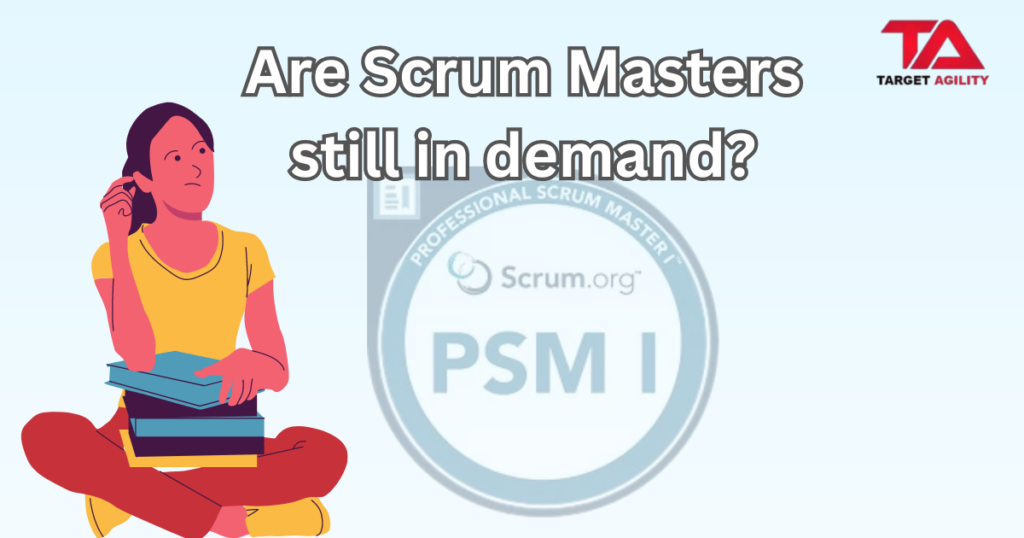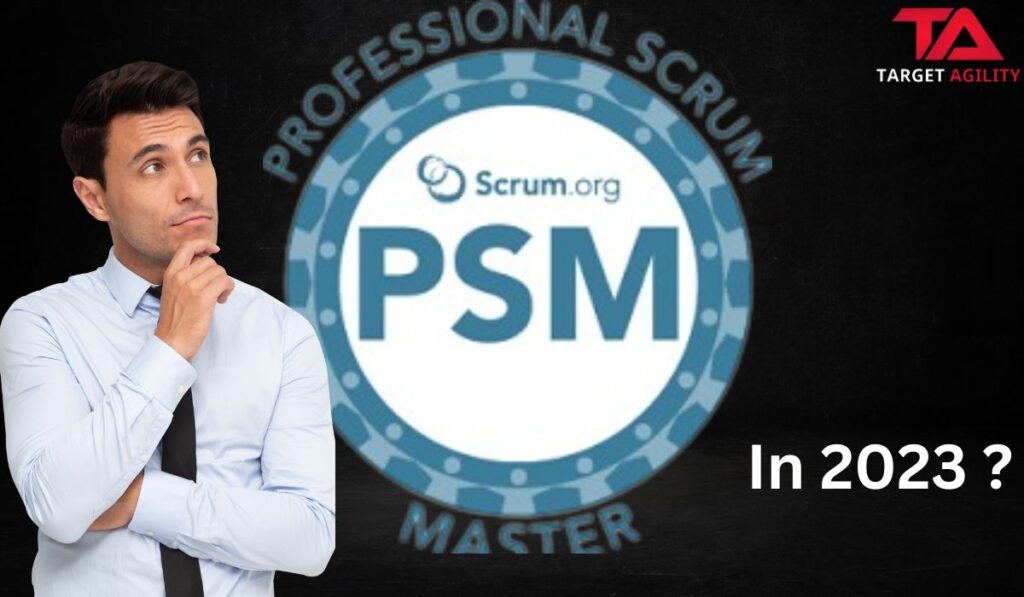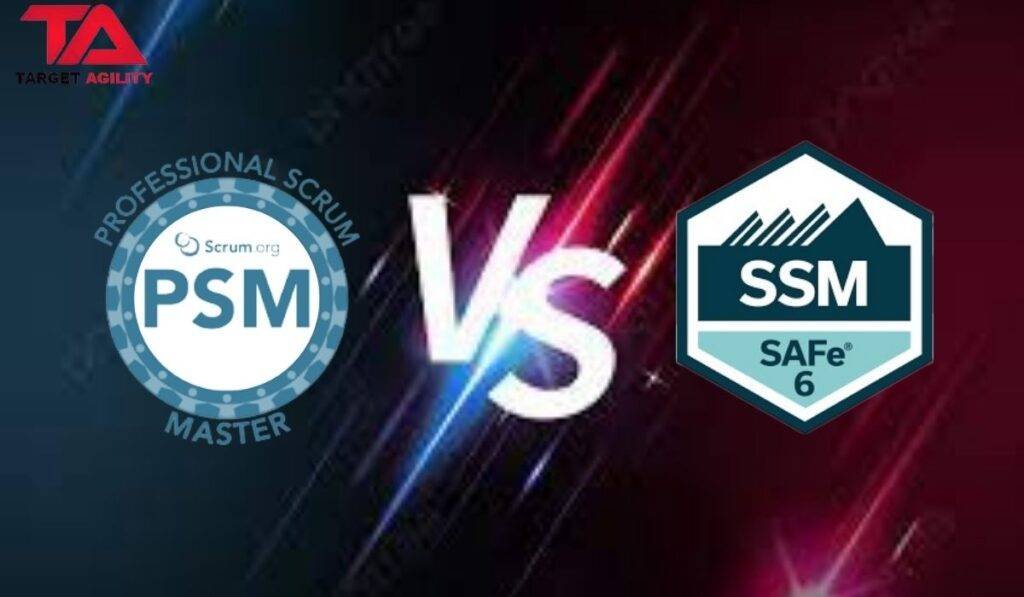AI in Scrum: Help or Harm?

AI is showing up everywhere in Scrum and Agile teams right now. People use ChatGPT to write user stories, generate acceptance criteria, or even run retrospectives. At first glance, it feels smart and efficient. But here’s the truth: most of the time, you’re just letting a statistical parrot into your team—and it’s quietly messing things up. What’s a “Statistical Parrot”? Big AI tools like ChatGPT don’t actually think. They don’t understand your customer, your business, or your sprint goal. They just predict the next word in a sentence, based on patterns in data. In short: they repeat things that sound right but often miss the real meaning. Scrum, however, is built on thinking, learning, and adapting. If your team starts leaning on AI to make choices, you’re swapping real insight for random predictions. That’s not agility—it’s fake speed. How AI Goes Wrong in Scrum 1. Bad Backlogs, Quickly Made Product Owners often use AI to write user stories. The backlog looks full and professional, but it’s usually shallow, repetitive, and disconnected from real customer needs. A backlog full of AI fluff only creates confusion and wasted sprints. 2. Empty Retrospectives Some teams let AI summarize feedback or suggest action items. But retrospectives are supposed to be about honesty, teamwork, and tough conversations. If you let a bot decide what matters, the team avoids reflection—and the chance to actually improve. 3. Fast but Pointless Work AI helps you write tasks, test cases, and documents faster. But if you’re rushing in the wrong direction, speed is useless. Scrum isn’t about how fast you work—it’s about creating real value. 4. Losing Human Skills Negotiating priorities, handling conflict, and thinking creatively are human skills. If you outsource too much of that to AI, your team gets weaker. Over time, you’ll lose the ability to think critically and work through problems together. Where AI Can Help I’m not saying AI has no place in Scrum. It does—but as a helper, not as a team member. It can save time by drafting templates, analyzing data, or suggesting options. But the real decisions, discussions, and accountability must come from humans. The Scrum Guide makes it clear: Scrum Teams are made of people. AI can assist, but it cannot replace teamwork, trust, or judgment. What Teams Should Do Instead Here’s the no-BS advice: Don’t Let the Parrot Lead Scrum works because of teamwork, courage, and real learning. A statistical AI parrot can’t do any of that—it just repeats patterns. If your team starts letting AI replace tough conversations and clear thinking, you’re not becoming “AI-powered.” You’re just covering up weak agility with shiny tech. Use AI, sure—but keep it in its place. Humans lead. Parrots repeat. Don’t confuse the two.
AI Can Prioritize Product Backlogs Better Than Humans – Prove Me Wrong

Let’s be honest — most product backlogs are a mess. They’re filled with random ideas, old tasks no one remembers, tech debt, and pressure from different stakeholders. And somehow, the Product Owner is expected to sort it all out and decide what comes next. It’s a tough job. But now, AI tools are stepping in and claiming they can do it better — faster, with less bias, and based on real data. So, the big question is: can AI really prioritize better than a human? In many cases, the answer looks like a strong “yes.” Why It’s Hard for Humans to Prioritize Well Product Owners don’t just pick features from a list. They’re constantly pulled in different directions: Even when you use frameworks like RICE or MoSCoW to rank ideas, it often comes down to opinions and politics. People are emotional. Bias creeps in. We give in to pressure. We guess. That’s where AI starts to shine. What AI Can Do That Humans Struggle With AI doesn’t guess. It uses real data to make suggestions. Here’s how it helps prioritize more accurately: So, Is AI Better Than a Product Owner? Not completely. AI doesn’t understand your company’s long-term goals or how important a customer relationship is. It doesn’t know timing or strategy. It can’t take a big risk based on instinct. But here’s the truth: most backlog decisions aren’t about long-term vision. They’re about choosing what to build next. And that’s where AI helps — by removing the noise and giving you clear, data-backed suggestions. Think of it like a smart assistant. You still make the final call. But you’re no longer flying blind. Why Humans Still Lead (For Now) We still value human judgment — and we should. Some decisions go beyond what data can explain. Sometimes you need to take a bold step even if the numbers don’t support it yet. But for everyday decisions — like which bug to fix next or which feature will help most — AI can save hours of guessing and debating. Conclusion: Work Smarter, Not Harder AI isn’t here to replace Product Owners — it’s here to make them better. If you’re trying to manage a long backlog full of noise and pressure, AI can help you cut through the chaos and focus on what really matters. So yes, in many cases, AI can prioritize better than humans — especially when the human is tired, overwhelmed, or guessing. Don’t see it as a threat. See it as your smartest teammate. Still not convinced? Prove me wrong.
Real-World Scrum Master Interview Questions

In 2025, companies expect Scrum Masters to do more than just follow the Scrum Guide. They want someone who can handle real challenges, guide teams through tough situations, and make Agile work in practice — not just theory. Here are 10 Scrum Master interview questions based on real-world situations. Each one tests how you think, how you act, and how you support your team in everyday work. 1. Your team always finishes sprints on time, but quality is poor. What would you do? This checks whether you focus on speed or quality. A good answer would explain how you encourage the team to improve quality by setting a clear Definition of Done, introducing automated testing, and using retrospectives to find and fix quality issues early. It’s not just about finishing tasks — it’s about doing them well. 2. The Product Owner wants to add a new task mid-sprint, and the team agrees. What’s your role? This tests how well you protect the team’s focus. Your answer should show that you respect team collaboration but remind them that the sprint goal shouldn’t constantly change. Suggest handling the new request in the next sprint unless it’s urgent — and explain how to discuss it during planning or review sessions. 3. One team member talks a lot in meetings while others stay quiet. How do you handle it? This checks your facilitation skills and how you create a safe environment. Talk about using structured methods like going around the room for input, silent brainstorming, or timeboxing speakers. Explain how you coach the team to be more balanced and respectful of everyone’s voice. 4. The team meets sprint goals, but stakeholders are still not happy. What would you do? Here, the focus is on value over output. Your answer should explain how you’d bring stakeholders into the process earlier, through planning, reviews, or backlog discussions. You want to make sure the work meets real customer needs, not just internal goals. 5. The team regularly misses their sprint commitments. How would you help? This question looks at how you support improvement. A good answer includes using retrospectives to find the root causes, adjusting sprint planning techniques, limiting work-in-progress, and improving estimations based on real data. The goal is learning and growing, not blaming. 6. A manager wants daily updates from the team. How would you respond? This checks how you handle pressure from traditional management styles. Explain that Agile provides transparency through tools like dashboards or burndown charts, and that managers can join sprint reviews or stand-ups. Suggest a better way to stay informed without interrupting the team’s flow. 7. The team says retrospectives are a waste of time. What do you do? This shows how you coach teams to find value in continuous improvement. Talk about making retrospectives more engaging, tracking action items, and celebrating what gets better over time. Sometimes all it takes is a new format or fresh perspective to make them useful again. 8. Two teams are working on the same product but aren’t aligned. How would you fix it? This tests how you handle coordination across teams. Share how you’d introduce things like a Scrum of Scrums, shared planning sessions, or cross-team reviews. If you’re familiar with frameworks like SAFe or Nexus, mention how they help align multiple teams. 9. A team member doesn’t follow Scrum practices and refuses to change. How would you handle it? Here, the interviewer wants to see how you manage conflict. A good approach would be to talk privately with the person to understand their concerns. Use one-on-one coaching and bring in team working agreements to rebuild shared expectations. 10. You join a team with a history of failed Agile efforts. What’s your first step? This checks your leadership and change management skills. Talk about observing first, listening to the team, building trust, and identifying small wins. The idea is not to force change, but to guide the team toward improvement at their pace. Want more similar questions ? 👉 Click Here Wrapping Up These interview questions go beyond textbook Scrum. They test how well you deal with real situations — conflicts, confusion, change, and pressure. To stand out in interviews, focus on your own experiences. Share real examples, explain what you did, what happened, and what you learned. Show that you’re not just a facilitator, but a coach, a listener, and a guide who helps teams get better every day.
Top Scrum Master Interview Questions – Fresh, Real-World Scenarios to Expect

In 2025, the role of a Scrum Master goes far beyond managing stand-ups or tracking velocity. Companies now expect Scrum Masters to act as team coaches, change leaders, and business partners. But most blogs still list the same old interview questions year after year. If you’re preparing for a Scrum Master interview this year, it’s time to focus on what’s really being asked in the real world—questions that reflect today’s hybrid work setups, evolving Agile practices, and the growing push for business results over process checklists. Here are 10 thoughtful and up-to-date questions you’re more likely to hear in a 2025 Scrum Master interview—along with why they matter and how to think about your answers. 1. How do you help a team stay Agile while also meeting compliance rules or audit needs? Why it’s important: Many industries (like finance or healthcare) have strict rules. Teams need to be flexible and still follow them. What to say: Talk about helping teams document the right things (like Definition of Done) and work closely with compliance teams without slowing down their delivery. Share how you found balance between following rules and staying Agile. 2. Tell me about a time you had to simplify a scaled Agile setup because it wasn’t working. Why it’s important: Companies often jump into SAFe or other frameworks too early, which can create more problems than it solves. What to say: Share a story where things got too complicated and you helped reduce overhead—maybe by focusing on smaller team coordination or cutting out extra ceremonies. Show that you can tailor Agile, not just follow it. 3. How do you recognize signs of burnout in a team, and how do you respond? Why it’s important: Well-being matters more than ever, especially in remote or high-pressure environments. What to say: Mention signs like low engagement, repeated missed goals, or team tension. Talk about how you create space for open conversation and promote a healthy work rhythm. 4. What would you do if a Product Owner keeps changing priorities during the sprint? Why it’s important: Teams need focus to deliver. Constant changes hurt that. What to say: Talk about coaching the PO on respecting the sprint plan and educating stakeholders on the cost of switching. Mention how you work with the team and PO to build trust and improve planning. 5. How do you encourage accountability without just relying on numbers like velocity? Why it’s important: Teams need to take ownership, but not feel like they’re being judged by data alone. What to say: Share how you encourage team-owned commitments, promote shared responsibility, and focus on continuous improvement. Mention retrospectives, working agreements, or visual tools like Kanban boards. 6. How do you run Agile meetings differently for remote, hybrid, or in-person teams? Why it’s important: Most teams are no longer working from the same location. What to say: Explain how you use digital tools, vary your facilitation style, and ensure everyone’s voice is heard. Talk about being flexible with formats to keep meetings engaging and useful. 7. Have you ever used storytelling to help a team or stakeholder understand something better? Why it’s important: People remember stories more than charts or rules. What to say: Give an example of when you used a story, analogy, or real-life situation to explain Agile or influence a decision. Show that you can connect with people, not just process. 8. How do you make sure your team’s work aligns with company goals or OKRs? Why it’s important: Teams need to see how their work supports the bigger picture. What to say: Talk about involving the team in PI planning, reviewing OKRs during backlog grooming, or creating sprint goals tied to outcomes. Show how you help the team focus on value. 9. Have you worked with Agile teams outside of IT, like in HR or marketing? What did you learn? Why it’s important: Agile is spreading to all parts of the business. What to say: Share how you helped non-tech teams get started with Agile principles. Maybe you introduced simple Kanban boards, daily stand-ups, or retrospectives. Emphasize how you adjusted your style for their unique needs. 10. If your team meets all sprint goals, but stakeholders still aren’t happy—what would you do? Why it’s important: Delivering everything planned doesn’t always mean you delivered the right thing. What to say: Talk about how you’d improve communication with stakeholders, ensure the backlog reflects real value, and use reviews or demos to gather better feedback. Show that you care about customer satisfaction, not just internal metrics. Why These Questions Matter in 2025 Scrum Master interviews today are about more than the Scrum Guide. Employers want someone who can: If you’re preparing, go beyond the basics. Reflect on real stories from your experience, your approach to tough situations, and how you help teams succeed—not just follow process. Want more similar question 👉 Click here Conclusion Being a Scrum Master in 2025 means wearing many hats: coach, guide, facilitator, problem-solver, and change agent. Interviewers want to know how you think, support people, and bring real value to the organization. So practice answering questions like these with stories from your work. Focus on how you solve problems, guide teams, and grow as a leader. That’s how you’ll stand out and show you’re ready for the future of Agile.
Top Scrum Master Interview Questions in 2025 (With Tips)

The role of a Scrum Master has grown significantly in recent years. It’s no longer just about running stand-ups or facilitating retrospectives. In 2025, organizations expect Scrum Masters to guide teams, influence leadership, drive agile transformation, and sometimes even understand AI-driven workflows. If you’re preparing for a Scrum Master interview, it’s essential to go beyond textbook answers. Here are the top Scrum Master interview questions being asked in 2025 — and what interviewers are really looking for. 🔹 1. How do you handle resistance to Agile from senior leadership? Why they ask: Companies still struggle with top-down resistance to Agile. Interviewers want to know if you can communicate value to leadership without creating conflict. Pro Tip: Share real-life examples, and talk about how you used metrics, workshops, or pilot teams to earn buy-in. 🔹 2. What metrics do you use to measure team performance in Scrum? Why they ask: Velocity alone is no longer enough. Modern teams focus on value, predictability, and team health. Answer Tip: Mention cycle time, lead time, escaped defects, team happiness, and sprint goal success. Explain why you choose specific metrics based on the team’s maturity. 🔹 3. How do you coach a team that’s doing Scrum only in name (ScrumBut)? Why they ask: Many teams adopt Scrum ceremonies without embracing Agile principles. Pro Tip: Talk about helping teams understand the “why” behind Scrum, running workshops, or improving cross-functional collaboration. 🔹 4. How do you facilitate remote or hybrid sprint events effectively? Why they ask: Remote work is still the norm in many industries in 2025. What to include: Tools (like Miro, Zoom, Mural, or Slack), time-boxing, rotating facilitators, and strategies for inclusive participation. 🔹 5. What’s the biggest mistake you made as a Scrum Master, and what did you learn? Why they ask: Self-awareness and growth mindset are critical. Answer Tip: Be honest. Reflect on what went wrong and how you handled it. This shows maturity and continuous improvement. 🔹 6. How do you handle a Product Owner who micromanages the team? Why they ask: Collaboration between PO and team can make or break productivity. What to say: Talk about facilitating boundary-setting conversations, clarifying roles, and encouraging trust-based collaboration. 🔹 7. How do you support a team that is consistently missing sprint goals? Why they ask: They want to see your coaching and problem-solving skills. Best approach: Explain how you might explore root causes (overcommitment, unclear stories, lack of focus), facilitate retrospectives, and help the team recalibrate expectations. 🔹 8. What’s your approach to handling team conflict? Why they ask: Conflict is normal. Interviewers want to know if you can manage it constructively. Answer Tip: Mention active listening, 1-on-1s, root cause analysis, and creating psychologically safe environments. 🔹 9. How do you balance servant leadership with delivery pressure from stakeholders? Why they ask: This question tests your leadership style and stakeholder management. What to say: Show that you protect the team’s focus, manage stakeholder expectations, and act as a bridge—not a barrier—between delivery and agility. 🔹 10. How do you stay up-to-date with Agile trends and practices? Why they ask: Continuous learning is key for any good Scrum Master. Pro Tip: Mention following thought leaders on LinkedIn, attending meetups, reading blogs (like Scrum.org, Agile Alliance), or completing certifications like PSM II or SAFe. Conclusion In 2025, being a Scrum Master is about more than frameworks and rituals. It’s about agile leadership, emotional intelligence, communication, and adaptability. Employers look for real-world experience, the ability to coach teams, and a mindset focused on continuous improvement. If you’re preparing for an interview, don’t just memorize answers — reflect on your real experiences. Interviewers want authenticity, not theory. Want more questions <<click here>>
The Changing Role of the Product Owner in 2025

The job of a Product Owner (PO) has always been important in Agile teams. But in 2025, it’s changing fast. Product Owners are doing much more than just writing user stories or managing the product backlog. They’re now helping shape business decisions, work closely with customers, and even use AI tools in their daily work. Let’s break down how this role is growing and what skills Product Owners need today. 1. More Than Just a Backlog Owner In the past, Product Owners mostly focused on tasks like: That still matters, but now, POs are also expected to think about the bigger picture. In 2025, they work with business leaders to: They’re not just building software—they’re helping build the right product that brings real results. 2. Working with AI Tools AI is changing how we build products. And it’s helping Product Owners work faster and smarter. For example: In 2025, POs are not afraid of AI—they’re using it to get more done and make better decisions. 3. Staying Close to the Customer Customer feedback is easier to get than ever. And good Product Owners are always listening. They now: In simple terms, Product Owners are becoming the customer’s voice in the team. 4. Working with More Teams Product Owners used to mainly work with developers. Now they work with almost everyone: This means POs need to be good at communicating and collaborating with people from different departments. 5. Focusing on Results, Not Just Features In the past, success meant finishing lots of features. Today, it’s about getting real results. For example: Product Owners now measure success based on outcomes, not just on how much work was done. Conclusion In 2025, the role of the Product Owner is bigger and more exciting than ever. It’s no longer just about writing user stories or filling the backlog. It’s about being a leader, a problem-solver, and a voice for the customer. To keep up, Product Owners need to keep learning—about technology, teamwork, data, and AI. The more you grow, the more value you can bring to your team and your product. In short: today’s best Product Owners aren’t just following the process—they’re helping shape the future. You can join our tailored Product Owner training program from 👉 here
Scrum Master Mistakes to Avoid: Common Anti-Patterns

Being a Scrum Master isn’t always easy. Even experienced Scrum Masters can fall into habits that seem helpful but actually hold the team back. These habits are called anti-patterns—they go against the purpose of Scrum. Let’s take a look at some common Scrum Master mistakes and how you can avoid them. 1. Being the Team’s Secretary What Happens:You end up scheduling meetings, writing notes, and updating task boards—all the time. Why It’s a Problem:The team becomes dependent on you and doesn’t learn to manage themselves. What to Do Instead:Let the team take ownership. Encourage them to update Jira and run parts of meetings. You’re there to guide, not to do everything. 2. Talking Too Much in Meetings What Happens:You lead every meeting, answer all questions, and fill every pause with your own input. Why It’s a Problem:Team members stop sharing ideas or speaking up. What to Do Instead:Ask open questions and let others lead. Stay quiet sometimes—give space for the team to think and talk. 3. Not Protecting the Team What Happens:Stakeholders interrupt the team, or urgent work gets pushed into the sprint at the last minute. Why It’s a Problem:The team loses focus and trust in the sprint plan. What to Do Instead:Say no to interruptions. Help the Product Owner push work to the next sprint. Explain why focus matters. 4. Micromanaging Like a Project Manager What Happens:You assign tasks or track who’s doing what. Why It’s a Problem:The team stops taking responsibility and starts waiting for direction. What to Do Instead:Let the team choose how to do their work. You support them by removing blockers and improving the process. 5. Ignoring Company-Wide Problems What Happens:You only focus on your team and don’t try to fix bigger issues. Why It’s a Problem:Bigger blockers like poor tools or cross-team delays slow down progress. What to Do Instead:Help fix problems beyond the team. Connect with other teams, raise issues, and push for system improvements. 6. Skipping Retrospectives What Happens:You cancel or rush retrospectives when the team is busy. Why It’s a Problem:The team misses chances to improve. What to Do Instead:Make retrospectives a priority. Use them to reflect, learn, and plan real changes—even small ones. 7. Staying the Same While the Team Grows What Happens:You do the same things each sprint, even when the team doesn’t need as much help. Why It’s a Problem:You stop adding value, and the team might outgrow your support. What to Do Instead:Adapt your role. Focus on coaching, mentoring, and helping other teams or the wider organization. Final Thoughts The Scrum Master’s job is to help the team grow, improve, and deliver value. But sometimes, doing too much—or not enough—can slow things down. By avoiding these common mistakes, you’ll become a better guide, coach, and leader. Keep learning, stay curious, and most importantly—listen to your team.
Data-Driven Product Ownership

In today’s fast-moving digital world, building a successful product isn’t just about adding new features. It’s about building the right features—those that truly help users and support your business goals. That’s why more and more Product Owners are turning to data to guide their decisions. A Product Owner (PO) today needs to do more than just manage the backlog. They need to use data—especially user behavior and business metrics—to decide what to build next. This approach is called data-driven product ownership. Let’s look at how using user analytics and business KPIs (key performance indicators) can help Product Owners make better prioritization choices. Why Data Matters in Product Decisions Without data, product teams often rely on guesses, opinions, or stakeholder pressure when deciding what to build. While experience and instinct are still important, they shouldn’t be the only things guiding your decisions. Using data helps you: Using User Analytics to Understand What Matters User analytics show you how real people use your product. Tools like Mixpanel, Amplitude, Google Analytics, and Hotjar can give you useful insights into what’s working and what’s not. Here are some helpful metrics to track: Looking at this kind of data helps Product Owners spot problems, find opportunities, and make better decisions about what to improve or build next. Aligning with Business Goals Through KPIs While user data shows how people interact with your product, business KPIs show how your product affects the company’s success. Some useful KPIs for Product Owners include: For example, if your company wants to reduce churn, your backlog should focus on improving user onboarding or fixing pain points that are driving people away. These changes are more valuable than building a flashy new feature that doesn’t solve a real problem. How to Prioritize with the Help of Data There are frameworks that help Product Owners prioritize work in a structured way. Some popular ones include: These tools help you combine data with estimates of business value and effort so you can focus on what truly matters. Tools That Can Help There are lots of tools that make it easier to be a data-driven Product Owner: When these tools are part of your workflow, prioritization becomes a regular habit, not just something you do once every few months. Conclusion Being a data-driven Product Owner doesn’t mean ignoring your instincts. It means using both your experience and solid data to guide decisions. By understanding your users and tracking business impact, you can build products that make a real difference—for your customers and your company. Data won’t make the decisions for you, but it will help you make better ones.
Self-Study vs. Formal Training for Scrum Certifications

In today’s job market, getting a Scrum certification can really boost your career in project management and Agile methods. Whether you’re aiming for a PSPO (Professional Scrum Product Owner), CSPO (Certified Scrum Product Owner), or PSM (Professional Scrum Master) certification, it’s important to know the concepts well. One big question is whether to study on your own or invest in formal coaching. While self-study gives you flexibility, formal training has some big advantages that are hard to ignore. Why Self-Study Is Popular Self-study is appealing because it’s flexible. You can study whenever and wherever you want, using online resources like Scrum guides, videos, and practice tests. It’s also a cost-effective way to learn and get certified. However, self-study has its challenges. It can be tough to stay motivated and keep up with a consistent schedule. Plus, it’s easy to get confused when tackling complex ideas alone. Without guidance from an expert, understanding how to apply what you learn to real-world situations can be tricky. The Benefits of Formal Training Formal training, on the other hand, gives you a clear, structured way to learn. Certified trainers share their real-world experience and guide you through Scrum concepts step by step. This makes it much easier to grasp the practical side of things, not just the theory. One of the biggest perks of formal coaching is hands-on practice. You get to participate in group activities, role-plays, and discussions that make the concepts stick. These interactive sessions also build your confidence, as you learn to put theory into practice. A coach can also answer your specific questions and give you tips on tricky exam topics. This personalized help makes a big difference, especially when you’re preparing for challenging certification exams. Connecting Theory with Real-Life Use A common problem with self-study is that it often focuses too much on theory. Formal training helps bridge this gap by showing how Scrum practices work in real-life situations. Through case studies and practical examples, you get a full picture of how to use Scrum in different industries. Building Your Professional Network Taking a formal training course also means meeting other professionals who share your goals. You get to build connections, share experiences, and learn from others. Many training programs also give you access to additional learning resources and communities that support you long after the course is over. Is It Worth the Investment? While self-study might save you money, formal training offers long-term value. Not only do you increase your chances of passing the exam, but you also build skills that employers really value. Many companies prefer candidates who have completed formal training since it shows dedication and a deep understanding of Agile methods. Final Thoughts Between self-study and formal training for Scrum certifications, formal training clearly has the edge. Self-study works for some, but it lacks the structure, support, and hands-on experience that coaching provides. Investing in a good training program means more than just passing an exam—it’s about setting yourself up for a successful career in Agile and Scrum you can check our training program by clicking here.
Focus on sustainability and social responsibility in agile teams

Why Sustainability and Social Responsibility Matter In today’s world, businesses need to think about more than just profits. They must also consider how their work impacts the environment and society. Agile teams, known for their flexibility and efficiency, are now integrating sustainability and social responsibility into their workflows. This blog explores how Agile methods can support these values, the challenges teams may face, and best practices to create a positive impact. Why Sustainability and Social Responsibility Are Important Sustainability means meeting today’s needs without harming future generations. Social responsibility involves making ethical choices that benefit society. Climate change, pollution, and social inequality are growing concerns, making it necessary for businesses to step up. Agile teams work in short cycles, making them well-suited to adopt sustainable and ethical practices. By doing so, they help protect the environment, improve workplace ethics, and contribute to corporate social responsibility (CSR). How Agile Teams Support Sustainability and Social Responsibility 1. Improving Practices Over Time Agile is all about continuous improvement. Teams can gradually add sustainable practices, evaluating their impact at every stage. For example, software teams can write energy-efficient code to lower the carbon footprint of digital products. 2. Minimizing Waste Scrum, Kanban, and other Agile methods focus on efficiency and reducing waste. By cutting down on unnecessary documentation, optimizing resources, and eliminating excess meetings, Agile teams can operate more sustainably. 3. Remote Work Reduces Carbon Footprint Many Agile teams work remotely, reducing pollution from commuting and office energy use. Digital collaboration tools help maintain productivity while lessening the environmental impact. 4. Making Ethical Choices Agile teams can factor ethics into their decisions, ensuring products and services benefit society. This can mean developing accessible software, promoting diversity, or working with ethical suppliers. 5. Aligning with Stakeholders for a Greater Impact Close collaboration with customers and partners allows Agile teams to align their work with sustainability goals. This could involve creating eco-friendly products or supporting fair trade initiatives. Challenges of Implementing Sustainable Agile Practices Despite the benefits, Agile teams may face challenges: Best Practices for Agile Teams To successfully integrate sustainability and social responsibility, Agile teams can follow these steps: Conclusion Sustainability and social responsibility are becoming essential for long-term business success. Agile teams, with their ability to adapt and improve, are in a great position to lead the way. By minimizing waste, making ethical decisions, and promoting sustainability, Agile teams can contribute to a better world while still delivering high-quality products and services. As businesses recognize the importance of these values, Agile methods will continue evolving to make a positive impact on society and the planet.
Understanding Flow Metrics in Agile

Agile teams aim to work efficiently and deliver value quickly. Traditional metrics like velocity only measure the speed of work, but they don’t highlight inefficiencies in the workflow. This is where flow metrics come in. Flow metrics track how work moves through a process, helping teams spot delays and improve productivity. Three key flow metrics—Flow Efficiency, Cycle Time, and Throughput—help teams understand and optimize their workflow. Using these, Agile teams can work smarter, remove bottlenecks, and improve delivery speed. What Are Flow Metrics? Flow metrics measure how smoothly work progresses, revealing hidden delays and inefficiencies. Unlike traditional Agile metrics, which focus on estimated progress, flow metrics provide real-time insights into work completion. 1. Flow Efficiency Flow efficiency shows how much time is spent actively working on a task versus waiting. It is calculated as: Flow Efficiency=(Active Work TimeTotal Cycle Time)×100\text{Flow Efficiency} = \left( \frac{\text{Active Work Time}}{\text{Total Cycle Time}} \right) \times 100 A low percentage means too much time is wasted waiting, while a higher number shows a more efficient workflow. 2. Cycle Time Cycle time measures how long it takes to complete a task from the moment work starts. Cycle Time=Completion Date−Start Date\text{Cycle Time} = \text{Completion Date} – \text{Start Date} A shorter cycle time means tasks are completed faster. If cycle time increases, it signals delays in the workflow. 3. Throughput Throughput measures how many tasks are completed in a given timeframe. Throughput=Total Work Items Completed in a Given Time Frame\text{Throughput} = \text{Total Work Items Completed in a Given Time Frame} Consistently high throughput indicates a well-optimized process, while fluctuations may show workflow issues. Why Flow Metrics Matter in Agile Traditional Agile metrics don’t always reveal the reasons behind delays. Flow metrics help teams: How to Improve Agile Workflows with Flow Metrics Conclusion Flow metrics—Flow Efficiency, Cycle Time, and Throughput—help Agile teams work more effectively. By focusing on real-time workflow data instead of just speed, teams can identify and fix inefficiencies, making their processes smoother and more predictable. By applying these metrics, organizations can build a stronger Agile foundation, improving team performance and delivering value to customers faster.
Scrum Masters Transitioning into Agile Coaches

The role of Scrum Masters is evolving. They are no longer just responsible for managing Scrum events and team workflows. Instead, they are taking on broader responsibilities, becoming Agile Coaches who help entire organizations embrace Agile principles. This shift is happening because businesses need Agile thinking not just in development teams but across leadership and different departments. As a result, the demand for Agile Coaches is increasing, making it a great opportunity for Scrum Masters to expand their influence. Understanding the Role of a Scrum Master Scrum Masters have traditionally worked with teams to implement Scrum effectively, facilitating sprint planning, daily stand-ups, sprint reviews, and retrospectives. Their main job is to remove obstacles and improve teamwork. However, as Agile adoption grows, organizations need a more strategic approach, which is where Agile Coaches come in. The Shift from Scrum Master to Agile Coach Agile Coaches operate on a larger scale. While Scrum Masters focus on individual teams, Agile Coaches work across an entire organization, helping leadership and different departments adopt Agile ways of working. This shift is not just about managing multiple teams but about fostering a cultural change within the company. Key Differences Between a Scrum Master and an Agile Coach Why Businesses Need Agile Coaches As organizations grow, Agile adoption must go beyond individual teams. Agile Coaches help: How to Transition from Scrum Master to Agile Coach If you’re a Scrum Master looking to become an Agile Coach, here are some key steps to take: The Future of Agile Coaching As Agile expands beyond software development into areas like marketing, finance, and HR, the role of Agile Coaches will continue to grow. Companies need Agile Coaches to guide them through this transformation, embedding Agile principles into their culture. This creates an exciting career path for Scrum Masters who want to expand their influence. Conclusion The role of Scrum Masters is changing, and Agile Coaching is the next step. Companies need Agile leadership at all levels, making this transition an excellent opportunity. By developing the right skills, Scrum Masters can take on a more strategic role and help organizations fully embrace Agile. Becoming an Agile Coach means not just helping teams follow Agile, but helping businesses truly live it.
Make Daily Stand-Ups Engaging: Tips for Agile Teams

Daily stand-up meetings are an important part of Agile teams, helping members communicate and work better together. But if not managed well, these meetings can become long and boring. Here are some simple tips to keep your stand-ups short, interesting, and useful. 1. Focus on Three Simple Questions Keep the meeting on track by having everyone answer these three questions: This format keeps the meeting focused and organized. 2. Set a Time Limit Keep the stand-up under 15 minutes. Assign someone to be the timekeeper to remind people to keep their updates brief. 3. Stand Up Physically Standing during the meeting helps keep it short. People are less likely to go on long tangents when they’re not sitting comfortably. 4. Use a Visual Board A Kanban board or task board helps people quickly see the status of tasks, reducing the need for long explanations. 5. Rotate the Leader Let different team members take turns leading the meeting. This keeps it fresh and allows everyone to practice leadership. 6. Handle Blockers After the Meeting If someone has a challenge, acknowledge it briefly and schedule a follow-up to discuss it in detail after the stand-up. 7. Focus on the Team The stand-up is for the team, not for managers. Keep the focus on helping team members work better together. 8. Avoid Problem-Solving Don’t try to solve problems during the stand-up. Save those discussions for a separate meeting. 9. Encourage Listening Make sure everyone pays attention and stays engaged. Discourage multitasking during the meeting. 10. Adjust to Fit Your Team If the standard format doesn’t work, try different formats or add new agenda items to meet your team’s needs. 11. Keep It Positive Create a friendly and supportive atmosphere. Celebrate successes and encourage teamwork. 12. Review and Improve Ask for feedback on the stand-ups and make changes if needed to keep them effective. Conclusion Daily stand-ups are a great way to keep your team aligned and productive. By keeping them short and engaging, you can make the most of these meetings and help your team work better together.
Agile and Sustainability: How to Build Green Products Using Scrum

Sustainability is becoming a necessity for businesses today. Companies are looking for ways to reduce their environmental impact while still meeting customer needs. Agile methods, especially Scrum, can help create eco-friendly products. This blog explains how Scrum can support green product development. How Agile and Sustainability Connect Agile focuses on being flexible, working together, and delivering value step by step. Sustainability is similar—it aims for continuous improvement, reducing waste, and creating long-lasting solutions. By combining these ideas, teams can build green products that meet market and environmental needs. Why Use Scrum for Green Product Development? Scrum provides a flexible and structured way to develop products. Its step-by-step approach helps teams adapt and improve as they work. Key benefits: Steps to Build Green Products with Scrum 1. Set a Sustainability Vision Start by defining clear environmental goals for your product. Ask yourself: 2. Add Sustainability to the Product Backlog Include tasks related to sustainability, such as: Balance these tasks with customer-focused features to deliver value and protect the environment. 3. Involve Stakeholders for Green Goals Work with customers, suppliers, and experts to set green goals and gather ideas. Tips: 4. Track Sustainability Metrics Define and monitor metrics to measure environmental impact. Examples: Review these metrics regularly to assess your progress. 5. Focus on Continuous Improvement Encourage the team to find ways to reduce their environmental footprint. Scrum retrospective meetings are perfect for discussing improvements. Ask during retrospectives: 6. Use Cross-Functional Teams Scrum encourages diverse teams, which is vital for sustainable product development. Involve experts from design, manufacturing, and supply chain to create well-rounded solutions. Tips for Green Product Development with Scrum Conclusion Building green products is not only good for the planet—it’s good for business. Consumers are increasingly choosing eco-friendly options, and companies that focus on sustainability have a competitive edge. Using Scrum can help teams create products that are both innovative and environmentally responsible. By setting a clear vision, involving stakeholders, and continuously improving, Agile and sustainability can work together for a greener future.
Simple Agile Best Practices for Better Project Management

Agile is a popular way to manage projects because it helps teams adapt quickly, collaborate better, and deliver results faster. But just following Agile isn’t enough—using the right best practices is essential for success. Here are some simple and effective tips to help Agile teams work smarter, produce better products, and stay on track. 1. Work as a Team: Developers and Testers Together In the past, developers and testers worked separately, which caused delays and communication problems. Agile encourages them to collaborate from the start. Tips: This teamwork approach helps finish tasks faster and with fewer mistakes. 2. Focus on Quality from the Beginning Quality isn’t just the job of the QA (Quality Assurance) team; it’s everyone’s responsibility. Waiting until the end to test products causes delays and problems. Tips: These practices help teams deliver better products without slowing down. 3. Use Continuous Integration and Delivery (CI/CD) CI/CD means constantly integrating code changes and delivering updates to users quickly. This approach reduces risks and makes it easier to fix problems. Tips: CI/CD makes it easier for teams to deliver features and fixes faster. 4. Plan Sprints and Refine Backlogs Regularly Good planning keeps Agile teams focused and productive. Sprint planning and backlog refinement are key for clear priorities. Tips: These practices help teams stay organized and aligned with business goals. 5. Keep Improving Agile teams need to keep learning and improving through regular feedback. Tips: Continuous improvement helps teams stay competitive and effective. Conclusion Following these simple Agile best practices can help teams work better, deliver high-quality products, and meet goals efficiently. By focusing on teamwork, quality, automation, planning, and improvement, organizations can unlock the full benefits of Agile and achieve long-term success.
Top Scrum Roles Explained: Scrum Master, Product Owner, and Developers

Scrum is one of the most popular Agile frameworks used by teams to deliver high-quality products efficiently. It promotes collaboration, flexibility, and continuous improvement. For Scrum to function effectively, specific roles are clearly defined: the Scrum Master, Product Owner, and Developers. Understanding these roles is essential for any team adopting Scrum. In this blog, we break down the key responsibilities and contributions of each role. 1. Scrum Master: The Guide and Facilitator The Scrum Master is often seen as the team’s coach. Their primary responsibility is to ensure that the Scrum process runs smoothly and that the team adheres to Scrum principles. Key Responsibilities: Why the Role Matters: A strong Scrum Master fosters a productive environment where teams can work efficiently and stay aligned with the Scrum framework. They help build a culture of collaboration and adaptability. 2. Product Owner: The Visionary and Decision-Maker The Product Owner (PO) is responsible for maximizing the value of the product by managing the product backlog and making strategic decisions. Key Responsibilities: Why the Role Matters: The Product Owner ensures that the team is building the right product by keeping customer and business priorities in focus. They make critical decisions to balance stakeholder expectations and development constraints. 3. Developers: The Builders and Innovators Developers (or the Development Team) are the people who design, build, and deliver the product increment during each sprint. Key Responsibilities: Why the Role Matters: Developers are the backbone of the Scrum team. Their ability to collaborate and deliver high-quality increments directly impacts the product’s success. How These Roles Work Together The success of Scrum depends on the seamless collaboration between the Scrum Master, Product Owner, and Developers: Effective communication and collaboration between these roles are crucial for delivering value to customers and maintaining team productivity. Conclusion Understanding the key roles in Scrum is essential for building a successful Agile team. The Scrum Master, Product Owner, and Developers each bring unique contributions to the process. When these roles work together in harmony, they create a dynamic and productive environment that delivers valuable products to customers. By fostering clear communication, shared goals, and mutual respect, Scrum teams can achieve great success in an ever-changing market.
Creating a Product Roadmap Using Scrum Principles

In today’s fast-moving world, having a clear product roadmap is essential for success. A good roadmap gives direction, keeps everyone on the same page, and helps teams focus on what matters most. By using Scrum principles, you can create a roadmap that’s flexible, clear, and focused on customer needs. Here’s how to do it. What Is a Product Roadmap? A product roadmap is a plan that shows the vision, goals, and progress of a product over time. It’s a tool to communicate priorities and milestones with everyone involved. Unlike traditional roadmaps, Scrum-based roadmaps are flexible and adapt to changes quickly. Why Use Scrum for Product Roadmaps? Scrum principles focus on adaptability, teamwork, and continuous improvement. By using Scrum for your roadmap, you can: Steps to Create a Product Roadmap Using Scrum Principles 1. Define the Product Vision Start with a clear product vision that explains what you want to achieve. This vision guides your roadmap and helps make decisions. Ask yourself: Share this vision with your team to ensure alignment. 2. Get Input from Stakeholders Talk to stakeholders to understand customer needs, business goals, and market trends. This information will help you prioritize. Use methods like: Early involvement of stakeholders builds trust and ensures you’re on the right track. 3. Build a Product Backlog The product backlog is a list of features, improvements, and fixes that align with your vision. To make it effective: The backlog is the core of your roadmap, keeping it organized and focused. 4. Group Items into Themes Organize backlog items into themes or goals like “improving user experience” or “expanding to new markets.” Themes help structure your roadmap and make it easier to communicate. Set measurable goals for each theme to track progress. 5. Prioritize Tasks Using Scrum Methods Scrum offers methods like MoSCoW (Must-Have, Should-Have, Could-Have, Won’t-Have) or WSJF (Weighted Shortest Job First) to decide what to do first. Involve the Scrum team to get different perspectives. 6. Use Timeframes for the Roadmap Scrum works in short cycles called sprints. Apply this idea to your roadmap by breaking it into sprints or quarters. This keeps the plan flexible and encourages regular reviews. 7. Make the Roadmap Visual Create a simple and visual roadmap using tools like Trello, Jira, or ProductPlan. Include: A clear visual roadmap makes it easy for everyone to understand. 8. Keep Refining and Sharing A Scrum-based roadmap is a living document. Review and update it regularly based on feedback and progress. Use sprint reviews or quarterly meetings to: Best Practices for Scrum-Based Roadmaps Conclusion Using Scrum principles for your product roadmap makes it flexible, value-driven, and collaborative. By starting with a clear vision, gathering input, and continuously refining your plan, you can create a roadmap that aligns your team and meets customer needs. In a constantly changing world, a Scrum-based roadmap helps you stay ahead and deliver results.
Continuous Learning and Development for Scrum Practitioners

Scrum and Agile methods are always changing, which means Scrum practitioners need to keep learning to stay effective. As markets and technology evolve, staying updated with new practices and tools is crucial for success. Let’s explore why continuous learning is important, the benefits it offers, and how Scrum practitioners can keep growing. Why Continuous Learning is Important Scrum is more than just a framework; it’s a mindset. Staying open to learning helps Scrum practitioners: What to Focus on for Growth To grow, Scrum practitioners can focus on several key areas: Ways to Keep Learning There are many ways Scrum practitioners can keep improving: How Organizations Can Help Organizations play a big role in helping their teams grow. They can: Benefits of Continuous Learning For Scrum practitioners and organizations, continuous learning brings many benefits: Conclusion Continuous learning is essential for Scrum practitioners. By taking certifications, exploring new tools, and staying curious, practitioners can stay ahead in their field. Organizations that support their teams’ growth also gain long-term benefits. Keep learning, and success will follow! Ready to take your Scrum skills to the next level? Explore our recommended courses and resources today!
Challenges in Scrum Implementation: How to Solve Them

Scrum is a popular Agile framework that helps teams manage complex projects. But using Scrum successfully isn’t always easy. Many organizations face challenges that can slow them down or cause confusion. Let’s look at some common problems in Scrum and simple ways to fix them. Common Problems in Scrum Easy Fixes for Scrum Challenges Real-Life Stories Conclusion Scrum can bring great results, but it comes with challenges. By addressing common issues like poor communication, resistance to change, and unclear roles, teams can unlock Scrum’s full potential. Success with Scrum requires training, teamwork, and a willingness to adapt. With these steps, organizations can make Scrum work for them and achieve their goals.Scrum is a popular Agile framework that helps teams manage complex projects. But using Scrum successfully isn’t always easy. Many organizations face challenges that can slow them down or cause confusion. Let’s look at some common problems in Scrum and simple ways to fix them.
Scrum in Education: A New Way to Learn and Work Together

Scrum, a popular method used in software development, is now being introduced in schools and colleges. It helps students work better as a team, take responsibility for their tasks, and build good study habits. Let’s see how Scrum is making learning more effective and enjoyable. What is Scrum? Scrum is a way of working that focuses on teamwork and completing tasks in short time frames called sprints. It uses specific roles like the Scrum Master (who guides the team) and the Product Owner (who sets goals). Daily check-ins and regular feedback are key parts of Scrum, making it a good fit for learning environments. Why Use Scrum in Education? Teachers and students face challenges like poor teamwork, missed deadlines, and ineffective study methods. Scrum helps solve these problems by: How Does Scrum Work in Education? Scrum is adapted to fit the needs of students and teachers. Here’s how it’s done: Examples of Scrum in Action Benefits for Students Challenges and How to Handle Them Conclusion Scrum is not just a new way to manage tasks—it’s a tool that helps students learn essential skills like teamwork, responsibility, and time management. By using Scrum, schools and colleges can make learning more effective and enjoyable. It’s a simple change with big benefits for both students and teachers.
AI-Powered Scrum Tools

Scrum has changed how teams work together to deliver projects, especially in software development. By focusing on short-term goals, flexible planning, and ongoing improvement, Scrum helps teams work more efficiently. Now, artificial intelligence (AI) is making Scrum even better by offering tools that help predict problems, assign tasks, and make smarter decisions. Here, we’ll look at how AI-powered tools improve Scrum, including predictive analytics, smart task assignment, and more. 1. Predictive Analytics: Planning Ahead AI tools with predictive analytics give teams useful insights into how projects are going. These tools analyze past data, team performance, and current trends to predict issues like delays or resource shortages. For example, tools like Jira Advanced Roadmaps use AI to estimate how long tasks will take, highlight task dependencies, and create better sprint plans. This helps Scrum Masters and Product Owners fix problems early and keep the team on track. AI also helps assess risks. It can point out potential issues like underestimated tasks or overloaded team members, making it easier to adjust plans. 2. Smart Task Assignment: Working Smarter Assigning tasks in Scrum means balancing workloads, skills, and availability. AI tools make this easier by analyzing team members’ skills and past work to suggest the best task assignments. For example, tools like Trello with Butler AI can recommend who should handle specific tasks based on their expertise. Similarly, GitHub Copilot can suggest the best contributors for certain coding tasks. This saves time and ensures everyone is working on tasks that match their skills, boosting productivity. 3. Better Sprint Planning AI makes sprint planning faster and more accurate by automating backlog prioritization and effort estimation. AI tools rank tasks based on factors like customer impact and technical dependencies. Tools like ClickUp’s AI Assistant can even create draft sprint plans that match the team’s capacity. This reduces time spent in meetings while keeping plans reliable and effective. 4. Real-Time Tracking and Reporting Tracking progress and creating reports can take a lot of time. AI tools make this easier by offering real-time updates and automatic reports. These tools keep everyone informed and highlight any deviations from sprint goals. For instance, Monday.com uses AI to create live dashboards that show project progress and suggest solutions to problems. Automated reports save time for Scrum Masters, letting them focus on team collaboration. 5. Improved Communication and Teamwork AI tools help teams communicate and collaborate better. AI chatbots integrated with tools like Slack or Microsoft Teams can answer questions, remind team members about tasks, or even run virtual stand-ups. For example, Standuply’s AI Assistant collects updates from team members and summarizes them. This saves time and ensures everyone stays on the same page, even in different time zones. 6. Understanding Team Morale Team morale is key to Scrum success. AI tools with sentiment analysis can monitor team communication to understand how everyone is feeling and spot signs of burnout or frustration. Tools like TeamMood or Officevibe analyze team sentiment and provide feedback. Scrum Masters can use this information to address issues early, creating a happier and more productive team environment. 7. Smarter Retrospectives AI improves Scrum retrospectives by identifying trends in team performance and offering actionable suggestions. Tools like Parabol analyze sprint data to highlight what went well and what needs improvement. This helps teams learn from each sprint and continuously improve their workflow. Conclusion: The Future of AI in Scrum AI is changing how Scrum teams work, making processes faster, smarter, and more collaborative. From smarter task assignment to better morale tracking, AI-powered tools help teams achieve better results with less effort. As AI evolves, its role in Scrum will only grow. Teams that embrace these tools will stay ahead, delivering high-quality work while fostering a culture of improvement and adaptability. Adopting AI tools isn’t just a step forward—it’s a leap into the future of teamwork.
Business Agility: Staying Flexible, Adaptable, and Ready for Change

In today’s fast-changing world, businesses face new challenges and opportunities every day. With new technologies, shifting customer expectations, and global market changes, companies need more than just efficiency to succeed. They need business agility—the ability to adapt, respond, and thrive in any situation. What is Business Agility? Business agility means more than just following agile methods in software development. It’s about building a flexible and adaptive organization. It focuses on creating a culture where quick decisions, learning, and innovation happen across the company. Key parts of business agility include: Why Business Agility is Important Organizations that adopt business agility enjoy several benefits: How to Become More Agile Becoming an agile business takes effort and planning. Here are some steps to get started: Examples of Business Agility Here are a few companies showing the power of agility: The Future of Business Agility As the world keeps changing faster, agility will be essential for success. Businesses must see agility as an ongoing process, not a one-time effort. This means constantly evaluating, improving, and building a culture of resilience and innovation. In summary, business agility is key to surviving and thriving in an unpredictable world. By staying flexible, adaptable, and responsive, companies can handle uncertainty, seize new opportunities, and secure long-term success.
Best Agile Tools for Your Team in 2024

Agile is a way of working that helps teams be flexible and efficient. To make Agile work smoothly, teams use special tools. These tools help them plan, track, and work together on projects. What to Look For in an Agile Tool When choosing a tool, think about: Top Agile Tools to Consider Here are some of the best Agile tools: Choosing the Right Tool To choose the best tool, consider: By carefully considering these factors, you can find the best tool to help your team work efficiently and deliver great results.
Challenges of Scaling Agile and How to Overcome Them

Agile has changed how teams work by encouraging flexibility, collaboration, and continuous improvement. While it works great for small teams, applying Agile across a large organization can be challenging. Scaling Agile requires more than just using Agile practices—it needs a change in mindset, processes, and coordination across different teams. Here are some common challenges and tips on how to handle them. 1. Cultural Resistance One of the main obstacles is the company’s culture. Traditional businesses often follow strict hierarchies and processes that don’t fit well with Agile’s focus on teamwork, transparency, and flexibility. How to Overcome: 2. Inconsistent Practices Between Teams Different teams may adopt different Agile methods—some use Scrum, others Kanban—causing confusion and inefficiency across the organization. How to Overcome: 3. Communication and Coordination Problems When Agile expands to multiple teams, communication can become tricky. Miscommunication and a lack of visibility across teams can slow down progress. How to Overcome: 4. Managing Dependencies and Priorities As more teams get involved, dependencies between tasks can pile up, making it hard to prioritize and deliver work efficiently. Teams might get stuck waiting for others, causing delays. How to Overcome: 5. Resistance to Change Some people might resist Agile because they fear losing control or are unsure about the new way of working. This resistance can come from managers or other key stakeholders. How to Overcome: 6. Measuring Success Traditional metrics like hours worked or tasks completed don’t show how well Agile teams are performing. Without the right metrics, it’s hard to know if things are improving. How to Overcome: Conclusion Scaling Agile is not always easy, but it can bring huge benefits if done right. By addressing cultural resistance, standardizing practices, improving communication, managing dependencies, and using the right metrics, organizations can successfully expand Agile across their teams. The key is to stay flexible, encourage collaboration, and keep improving. With the right approach and dedication, Agile can drive innovation and help businesses succeed on a larger scale.
Managing Technical Debt in Agile Development

In Agile software development, technical debt is an important concept that helps teams balance speed and long-term sustainability. Agile focuses on delivering working software quickly, but technical debt highlights the costs of taking shortcuts during the development process. Let’s explore what technical debt means, its causes, impacts, and how to manage it effectively. What is Technical Debt? Technical debt refers to the extra work created when developers choose faster, less optimal solutions to meet immediate needs. Like financial debt, it grows over time, requiring more effort and resources to fix. Ignoring it can lead to bigger problems later. Types of Technical Debt There are several types of technical debt, including: Causes of Technical Debt in Agile Many factors contribute to technical debt in Agile projects. The focus on delivering software quickly can lead to rushed decisions. Changing requirements can force teams to rework code, introducing inconsistencies. Skipping thorough code reviews, neglecting documentation, and having poor testing processes can all add to the debt. Impacts of Technical Debt If left unchecked, technical debt can slow down projects and harm team productivity. Developers may spend more time fixing issues instead of building new features. This increases costs and can lead to bugs or poor performance. Over time, frustration with messy code can lower team morale. Managing Technical Debt in Agile To keep technical debt under control, teams can take a few key steps: Balancing Innovation and Maintenance Technical debt isn’t always bad—it can be a useful tool for meeting deadlines. However, managing it effectively ensures it doesn’t grow out of control. By addressing technical debt as part of the Agile process, teams can deliver innovative solutions without compromising on long-term success. In summary, technical debt is a normal part of software development. When teams understand its causes and plan for it, they can balance speed and sustainability, ensuring their projects stay efficient and their code stays manageable.
Agile Failures: What Goes Wrong and How to Fix It

Agile is known for improving teamwork, speeding up delivery, and helping organizations adapt to change. However, not every Agile transformation succeeds. Many real-life failures offer important lessons about what went wrong and how to fix it. Misunderstanding Agile Principles One common issue is adopting Agile practices, like daily stand-ups or sprints, without understanding their purpose. Teams often follow these rituals mechanically without truly embracing agility. This is sometimes called “Zombie Agile.” How to Fix It:Teach teams and leaders about the Agile Manifesto and its principles. Agile is about delivering value, responding to change, and working closely with customers. Adapt the framework to fit your team’s needs instead of treating it as a strict set of rules. Top-Down Agile Implementations Agile often fails when leaders force it on teams without their input. Processes and tools are imposed, leading to frustration and resistance. How to Fix It:Include teams in the decision-making process. Let them take ownership of Agile practices and create space for open feedback. Leaders should guide and support, not micromanage. Collaboration and transparency are essential for Agile to work. Lack of a Cultural Shift Agile can’t thrive in a culture based on rigid hierarchies, micromanagement, or a fear of failure. If the organization’s culture doesn’t support trust and collaboration, Agile practices won’t succeed. How to Fix It:Build a culture that matches Agile values. Encourage open communication, learning from mistakes, and teamwork. Leaders should lead by example by being transparent, adaptable, and collaborative. Ignoring Technical Excellence Sometimes teams focus so much on delivering quickly that they ignore technical quality. This can lead to poorly built systems, frequent bugs, and growing technical debt. How to Fix It:Make technical excellence a priority. Use tools and methods like automated testing, continuous integration, and pair programming. Agile isn’t just about speed—it’s also about creating sustainable, high-quality work. Overloading Teams Organizations sometimes see Agile as a way to push teams to do more in less time. Unrealistic goals, too many meetings, and constant task-switching can overwhelm teams and lead to burnout. How to Fix It:Respect the team’s capacity and focus on delivering fewer, more valuable items. Measure progress through healthy team practices, not just output. A balanced workload keeps teams productive and motivated. Failing to Measure Success Without clear metrics, it’s hard to tell if Agile is working. This can cause teams to lose focus and stakeholders to lose confidence. How to Fix It:Define success with clear goals, like faster delivery times, better customer feedback, or increased ROI. Track these metrics regularly to identify what’s working and where to improve. Not Adapting to Change Ironically, some Agile teams struggle to adapt. They stick rigidly to their plans even when customer needs or market conditions change. How to Fix It:Encourage teams to re-evaluate and adjust their plans regularly. Product owners should actively gather feedback and update priorities. Flexibility is a key part of Agile—use it to respond effectively to change. Conclusion Agile often fails because teams lose sight of its core principles. Focusing too much on processes and tools, without addressing teamwork and adaptability, leads to problems. However, every failure offers a chance to learn and improve. Agile isn’t a quick fix—it’s a mindset. With the right approach, even setbacks can pave the way for success.
Challenges Faced by Scrum Masters and How to Tackle Them

A Scrum Master has a big job guiding teams through Agile methods, keeping them productive, and making sure they follow Scrum rules. Even experienced Scrum Masters face challenges, but here are some common ones and ways to handle them. 1. Managing Stakeholder Expectations Scrum Masters often struggle with balancing what stakeholders want and what the team can realistically deliver. Stakeholders may push for quick results or extra features, which can overwhelm the team and lead to burnout. Solution: Open communication is key. Scrum Masters should keep stakeholders informed about the team’s capacity and show how adding extra work impacts deadlines. Using charts or data like team velocity can help stakeholders see what’s realistic. Educating stakeholders on Agile values, such as working at a sustainable pace, can also make a big difference. 2. Dealing with Resistance to Change Teams used to traditional project management may resist Agile methods, feeling uncomfortable with new roles or frequent check-ins. This can lead to skipped meetings or doubts about the Agile approach. Solution: Scrum Masters should be patient, acting as coaches. Hold workshops to explain Agile basics and show how Scrum benefits the team, such as by enabling quick feedback. Encourage the team to try new things and adapt slowly, celebrating small successes along the way to build trust in the process. 3. Ensuring Team Collaboration Sometimes team members don’t collaborate well, especially in remote teams. Miscommunication, delays, and working in silos can slow down the process. Solution: Scrum Masters can promote teamwork by organizing team-building activities and setting up clear channels for communication. Daily stand-ups and regular retrospectives help team members share updates and voice issues. For remote teams, use tools that support collaboration and establish communication guidelines. Building a supportive environment where everyone feels comfortable sharing can also boost collaboration. 4. Managing Scope Creep In Agile, flexibility can sometimes lead to “scope creep,” where extra features are added continuously. This often happens when priorities aren’t clear, putting pressure on the team. Solution: Scrum Masters should work closely with the Product Owner to keep the backlog organized and prioritize tasks based on value. Remind the team of the sprint goal and help them commit only to tasks they can complete in the sprint. For new requests, explain their impact on current work and suggest adding them to future sprints. 5. Handling Conflicting Personalities Teams are diverse, with members bringing different perspectives and working styles. Conflicts can arise, affecting teamwork and productivity. Solution: Scrum Masters should promote respect and open communication. Encourage team members to express their ideas and address conflicts openly. Private coaching sessions may also help. Setting team rules and modeling respectful behavior can guide the team toward healthier collaboration. 6. Promoting Continuous Improvement Teams can become comfortable and stop seeking improvements, which can reduce productivity over time. Solution: Scrum Masters should make retrospectives a safe, engaging space for feedback. Try different retrospective formats to keep them fresh and encourage honest reflection. Set improvement goals and check in on them in the next sprint. Supporting continuous learning and adapting based on feedback can keep the team motivated and productive. Conclusion Being a Scrum Master has challenges, from managing expectations to encouraging teamwork. But with clear communication, patience, and dedication to Agile principles, these challenges can become growth opportunities. Overcoming these obstacles helps the team work better together, adapt to change, and deliver quality results, making Agile truly effective.
Essential Skills Every Scrum Master Needs

A Scrum Master plays a key role in helping teams work well within Agile practices, especially when using Scrum. They’re not just in charge of meetings but support the whole team and organization to follow Agile principles effectively. Here are the main skills a good Scrum Master needs. 1. Facilitation and Communication Skills A Scrum Master runs meetings like sprint planning, daily stand-ups, sprint reviews, and retrospectives. They make sure these meetings are focused, organized, and productive. This means they need to guide discussions and encourage everyone to participate. Communication is essential because the Scrum Master acts as a bridge between the development team, the Product Owner, and other stakeholders. They should explain things clearly, avoid jargon, and ensure everyone is working toward the same goals. 2. Coaching and Mentoring A big part of the Scrum Master’s job is to coach and support the team. They help team members understand and use Agile principles, encouraging them to take charge of their work. Rather than giving answers directly, they guide the team with questions, helping them find solutions themselves. This approach builds a culture of learning and growth, which is important for Agile teams. 3. Conflict Resolution and Negotiation Conflicts happen in any team, and a Scrum Master should know how to resolve them positively. Whether it’s disagreements over priorities, resources, or personal differences, they need to manage conflicts calmly and fairly. This involves listening actively, showing patience, and having a problem-solving attitude. Scrum Masters also act as neutral helpers, allowing team members to express their concerns and work toward a solution together, keeping the team unified. 4. Servant Leadership Being a Scrum Master is about servant leadership—empowering the team rather than managing or controlling them. They focus on supporting the team by removing roadblocks and helping them work smoothly. A servant leader puts the team’s needs first, builds trust, and creates a safe environment. They protect the team from distractions so they can stay focused on delivering results for the customer. 5. Knowledge of Agile and Scrum While people skills are crucial, a Scrum Master also needs a solid understanding of Agile principles and the Scrum framework. They should know what each part of Scrum is for, like the product backlog, sprint backlog, and increment, and how to manage these effectively. They should be comfortable using tools like story mapping and tracking velocity to help the team make decisions. They should also adjust these practices to fit the unique needs of the team and organization. 6. Adaptability and a Focus on Improvement Adaptability is key in Agile environments. A good Scrum Master is open to change and always looking for ways to improve. They should keep learning, stay updated on new Agile ideas, and refine their own approach. By being adaptable and showing a commitment to improvement, they encourage the team to stay flexible and improve over time. In short, a Scrum Master needs a blend of skills: good communication, conflict resolution, a deep understanding of Agile and Scrum, and a focus on serving the team. By mastering these skills, Scrum Masters can help the team work together effectively, deliver quality results, and create real value for the organization and its customers.
8 Simple Ways to Make Your Daily Scrum Fun and Engaging

Daily Scrums can sometimes feel repetitive and lose their energy, making it hard for team members to stay engaged. But with a few changes, you can make these meetings something people look forward to. Here’s how to add some fun, variety, and value to your Daily Scrum: 1. Switch Up the Setting and Style If you’re always meeting in the same spot, try switching it up! Change locations, try a virtual background, or even go outside. For a fresh twist, do a “walking stand-up” where everyone moves around as they talk. Changing the environment or style brings new energy and keeps things from feeling stale. 2. Rotate the Leader Having the same person (often the Scrum Master) lead each time can get repetitive. Let team members take turns leading the Scrum. This keeps things fresh and gives everyone a sense of ownership. Plus, different leaders bring different styles and ideas, making each meeting unique. 3. Add Themes or Daily Focuses Make each day special by giving it a theme or focus. For example, Mondays could be “Problem-Solving Day,” where team members share any obstacles they’re facing. Tuesdays could be “Takeaway Day,” where each person shares a lesson learned. These small changes can help the team look forward to each day’s Scrum with new purpose. 4. Share Small Personal Updates Start each meeting with a quick personal update or a positive note from each person. A quick check-in or “what’s one small win you’ve had recently?” helps team members connect on a personal level. This brings a human touch to the meeting and strengthens team bonds. 5. Use Visuals and Stories Try using visual tools like Kanban boards, project timelines, or virtual boards to make updates more engaging. Team members can walk the group through visuals to show progress. Even better, have them frame their updates like a mini-story, starting with what they tackled yesterday and what they’re taking on today. This keeps the meeting engaging and clear. 6. Set Time Limits and Gamify To keep the meeting moving, set a timer for each person’s update. This encourages everyone to keep it brief and focused. You could also gamify it: award points when the meeting finishes on time, and celebrate with a team reward when you reach a set goal. 7. Focus on Problems, Not Just Status If the Scrum is just a checklist of what everyone did, people can lose interest. Encourage team members to share any blockers they’re facing, and have the group brainstorm quick ideas to help. If a longer discussion is needed, decide who will meet later to solve it. This keeps the Scrum focused on solving real issues rather than just giving updates. 8. Celebrate Wins and Boost Team Morale Wrap up the meeting by celebrating small wins. This can be as simple as giving kudos to someone who overcame a challenge or reached a milestone. Small celebrations create a positive atmosphere and keep everyone motivated. These simple changes can make your Daily Scrums more enjoyable, focused, and valuable. By keeping things fresh and centered on collaboration, you’ll help your team look forward to each day’s work with renewed energy.
How to Connect Scrum Developers with Customers: Easy Ways to Improve Teamwork

In software development, maintaining a strong connection between the development team and the customers is crucial to ensure the product meets user needs and receives timely feedback. Scrum, a popular project management framework, emphasizes the importance of this connection, but keeping it strong can be challenging. Here are some practical ways to enhance collaboration between developers and customers in Scrum. 1. Involve Developers in Sprint Reviews A Sprint Review takes place at the end of each Sprint (typically 1-4 weeks) where the team showcases their completed work. While the Product Owner usually leads the meeting, it’s beneficial to have developers actively participate. When developers present their work directly to customers, they can: This direct engagement helps developers see the real-world impact of their work and make timely adjustments based on customer insights. 2. Invite Customers to Planning Sessions In Scrum, regular planning meetings help organize the team’s work. Involving customers in these sessions can be valuable as developers gain direct input from the people who will be using the product. By asking questions and clarifying requirements during planning, developers can avoid misunderstandings and ensure they’re working on the features that matter most to customers. 3. Encourage Regular Customer Feedback Consistent feedback from customers is vital for keeping the project aligned with their expectations. Some effective ways to gather feedback include: By receiving feedback firsthand, developers can make improvements more quickly and effectively. 4. Use Customer Personas and Journey Maps Customer personas and user journeys are helpful tools for keeping the team focused on customer needs: These tools guide developers in creating features that address real customer problems and enhance the overall user experience. 5. Enable Direct Communication Between Developers and Customers Although the Product Owner typically communicates with customers, there are times when developers need to clarify technical details. Establishing quick communication channels, such as short meetings or messaging systems, allows developers to get answers directly and quickly, reducing delays and misunderstandings. 6. Facilitate Connections Through the Product Owner The Product Owner serves as the main link between the development team and the customers. While they guide the project, they can also help facilitate direct communication when necessary, such as setting up quick discussions for resolving specific customer concerns. By promoting these direct interactions, the Product Owner ensures the team remains aligned with customer needs. 7. Incorporate Customer Feedback into Team Discussions During the Sprint Retrospective, where the team reflects on what went well and what can be improved, discussing customer feedback can be highly valuable. This keeps the team focused on delivering a product that meets user needs. Key questions might include: This process encourages continuous improvement and ensures that customer feedback remains a central part of the team’s work. Conclusion Fostering a strong connection between developers and customers is essential for building a product that truly addresses user needs. By involving developers in key meetings, encouraging direct communication, and gathering regular feedback, teams can enhance collaboration and deliver more valuable products. When developers and customers work closely, the team can respond more quickly to customer needs, resulting in a product that offers real value.
Why Scrum Masters Are More Important Than Ever

As businesses adapt to fast changes in technology and market needs, many have turned to Agile methods to manage projects and deliver results quickly. Among the different Agile frameworks, Scrum is one of the most widely used. A key player in the Scrum process is the Scrum Master—a person responsible for helping teams work efficiently and follow Scrum practices. But with the constant changes in the workplace, one might wonder: Are Scrum Masters still in demand? The short answer is yes. Let’s take a look at why Scrum Masters continue to be important and how their role has changed over time. The Importance of Agile Agile methodologies, like Scrum, Kanban, and Lean, have become essential for delivering projects efficiently. They allow teams to work in short cycles, adapt to changes, and deliver value to customers faster. As more companies adopt Agile to stay competitive, the need for Scrum Masters grows. Scrum Masters help teams understand and follow the principles of Agile, encouraging collaboration, flexibility, and continuous improvement. What Does a Scrum Master Do? Many people think that Scrum Masters are project managers who assign tasks, but their role is actually quite different. A Scrum Master acts as a servant-leader, meaning their job is to support the team and help them succeed. Some key responsibilities include: These responsibilities highlight why Scrum Masters are so important—they help teams communicate better, collaborate efficiently, and improve their workflows, which are crucial in today’s fast-paced business world. Demand Across Different Industries While Scrum began in software development, its principles are now being used in a variety of industries, such as marketing, healthcare, finance, and more. As these industries adopt Agile, the demand for Scrum Masters has expanded beyond tech companies. Businesses in areas like manufacturing, logistics, and even government agencies are turning to Agile frameworks like Scrum to increase efficiency and deliver better results. For example, in industries like healthcare or finance, where there are strict regulations and fast-changing requirements, Agile helps teams meet goals more quickly. Scrum Masters in these sectors help teams navigate complex rules while maintaining flexibility and delivering high-quality results. How the Scrum Master Role Has Evolved As more companies adopt Agile, the role of the Scrum Master has also changed. Today’s Scrum Masters need to know more than just the basics of Scrum. In larger organizations, they may need to be familiar with scaling Agile frameworks, like Scrum@Scale, SAFe, or LeSS, which are used to manage larger teams or multiple projects at once. Additionally, the shift to remote work has changed how Scrum Masters operate. Virtual teams come with new challenges, such as ensuring effective communication across different time zones. Scrum Masters now play a key role in keeping remote teams connected and ensuring they collaborate smoothly, even when they are not in the same location. Why Scrum Masters Are Valuable Because of the wide range of tasks they handle, Scrum Masters bring significant value to organizations. They help reduce the time it takes to get products to market, improve the quality of work, and foster better teamwork. These benefits have kept Scrum Masters in demand across industries. Platforms like LinkedIn and Glassdoor consistently rank Scrum Master as a top job, especially in tech and project management fields. Conclusion: Are Scrum Masters Still Needed? Absolutely. Scrum Masters are still in high demand, and their role is becoming even more important. As more companies embrace Agile methodologies, both in technical and non-technical areas, the need for skilled Scrum Masters continues to grow. In addition, the challenges of remote work and managing larger teams make their role even more essential. If you’re thinking about becoming a Scrum Master or already working as one, you can feel confident that your skills will remain valuable for many years to come. “Ready to take your career to the next level? Join our Scrum Master course today and make it happen! Click here to get started!”
Boost Your Scrum Performance: An Easy Guide for Agile Teams

Scrum is a popular method used to manage projects, especially in software development. It helps teams work together efficiently and deliver high-quality products faster. However, even though Scrum is straightforward, it takes practice and effort to get really good at it. In this guide, we’ll share simple tips to help you and your team improve your Scrum performance. 1. Learn the Basics Well To do well in Scrum, everyone on the team needs to understand how it works. This means knowing the three main roles (Product Owner, Scrum Master, and Development Team), the five key meetings (like Sprint Planning and Daily Stand-up), and the three important documents (Product Backlog, Sprint Backlog, and Increment). Tip: Make sure everyone on the team knows their role and responsibilities. Consider reading the Scrum Guide or attending a Scrum workshop to refresh your knowledge. 2. Set Clear and Achievable Goals One common problem in Scrum is unclear or unrealistic goals. During Sprint Planning, the Product Owner and the team should work together to create specific, doable goals for each sprint. These goals should fit within the sprint time and match the overall project vision. Tip: Use user stories or other tools to break down tasks clearly. This helps everyone know what they’re working toward and stay focused. 3. Improve Sprint Planning and Backlog Organization Good Sprint Planning is key to a successful sprint. This means making sure the Product Backlog is organized and that only the most important tasks are included in the Sprint Backlog. Regular backlog grooming helps keep things clear and prioritized. Tip: Have regular meetings to review and clean up the backlog. This makes planning sprints easier and more effective. 4. Encourage Communication and Teamwork Scrum works best when the team communicates well. The Daily Stand-up is one way to ensure everyone stays on the same page, but team members should communicate openly throughout the sprint, not just in meetings. Tip: Create an environment where team members feel comfortable speaking up about challenges or ideas. Use tools like Slack or Microsoft Teams to stay connected, especially if your team works remotely. 5. Make the Most of Retrospectives The Sprint Retrospective is a valuable meeting where the team reviews what went well and what needs improvement. It’s a chance to find ways to get better each sprint. Tip: Make sure retrospectives are open, honest, and focus on taking actions to improve. Then, apply those lessons in the next sprint to keep getting better. 6. Keep Daily Stand-ups Short and Focused The Daily Stand-up is a quick meeting designed to help the team stay aligned. However, it can easily become too long or off-topic if not managed well. Tip: Stick to the basics: What did you do yesterday? What are you working on today? Do you have any blockers? This keeps the meeting short and effective. 7. Support the Scrum Master The Scrum Master plays a key role in making sure the team follows Scrum rules and improves over time. They help remove obstacles and make sure the team can work smoothly. Tip: Give the Scrum Master the support they need to solve problems and keep the team focused. A strong Scrum Master helps the team perform at its best. 8. Track Progress with Metrics To improve, it’s important to measure how the team is doing. Metrics like sprint velocity, burndown charts, and cycle time can show whether the team is improving or facing problems. Tip: Regularly review these metrics during Sprint Reviews or Retrospectives. Use them to start conversations about how the team can get better. 9. Encourage Responsibility and Ownership Scrum teams work best when everyone takes responsibility for their work. When team members feel accountable, they are more motivated and engaged in achieving the sprint goals. Tip: Encourage a culture where team members take ownership of their tasks. This builds trust and makes the team stronger. 10. Stay Flexible and Adaptable Scrum is designed to be flexible. Be ready to adapt and make changes when necessary, especially as the project or client needs evolve. Scrum’s iterative process allows teams to adjust as they go. Tip: Don’t be afraid to make changes during the project. Staying flexible helps the team respond to new challenges and deliver better results. Conclusion Improving Scrum performance takes continuous effort, but by focusing on understanding the framework, setting clear goals, improving communication, and being open to change, your team can deliver better results more efficiently. Scrum is all about collaboration, adaptability, and continuous improvement, so encourage your team to embrace these values.
Excelling in 2023: Why Getting PSM Certified Is a Big Deal

As we step into 2023, staying on top of the professional game is crucial. One surefire way to do this is by getting a Professional Scrum Master (PSM) certification. It’s a powerful tool that can give your career a significant boost, and in this blog, we’ll break down why. In the fast-paced world we live in, businesses are all about being quick and adaptable. PSM certification teaches you how to make teams more agile, and that’s a skill employers are looking for. With industries leaning towards agility, having a PSM certification puts you in sync with what the job market wants. PSM certification doesn’t just teach you about Scrum (the agile framework it’s based on); it also hones your project management skills. Scrum focuses on working in small, efficient steps and constant improvement. By getting PSM certified, you learn not just to implement Scrum but also to be adaptable and responsive – crucial traits for managing projects in today’s speedy business world. As companies embrace agility, having a PSM certification becomes a game-changer for your career. If you’re a project manager, team lead, or aiming for higher positions, PSM certification gives you an edge. It opens up new job opportunities and shows that you’re committed to keeping up with the latest and best practices in the industry. One great thing about PSM certification is that it’s known globally. In a world where businesses operate across borders, having a certification that’s respected everywhere is a big plus. PSM certification not only says you’re skilled in agile practices but also boosts your professional reputation, making you a valuable asset for employers worldwide. Scrum, the heart of PSM certification, promotes collaboration and self-organization. PSM-certified individuals know how to build a culture of teamwork and improvement in their teams. By using Scrum practices, you can make your team more productive, adaptable, and communicative – qualities that are crucial in today’s collaborative work settings. 2023 is bringing a lot of changes and uncertainties. PSM certification doesn’t just teach you how to handle these challenges; it also prepares you to be adaptable. By embracing agile principles, PSM-certified individuals can tackle evolving project needs, market shifts, and changing customer expectations, making them valuable assets in a world that’s always changing. Getting PSM certified is just the beginning. The world of Scrum and agile methodologies is always evolving, and PSM-certified professionals are encouraged to keep learning. This commitment to ongoing learning not only boosts your knowledge but also keeps you ready to contribute to your organization’s success in a world that’s always evolving. Conclusion In a nutshell, getting a PSM certification in 2023 comes with a bunch of benefits. From meeting the needs of agile-focused industries to improving project management skills, opening up career opportunities, and gaining global recognition – PSM certification is a key to professional success. As we navigate through the changes and opportunities in the years to come, investing in a PSM certification is like investing in yourself – a step towards not just staying in the game but excelling in the rapidly changing world of business.
Boosting Your Career: Unleashing Opportunities with PSM, SAFe, and PSPO Certifications

In today’s dynamic and competitive professional landscape, continuous learning and skill development are paramount for career advancement. Earning certifications in high-demand areas like project management and Agile methodologies can significantly enhance your employability and open doors to new opportunities. Among the most sought-after certifications are PSM (Professional Scrum Master), SAFe (Scaled Agile Framework), and PSPO (Professional Scrum Product Owner) credentials. These certifications demonstrate your expertise in leading and managing successful Agile projects and can help you achieve your career goals. The Significance of PSM, SAFe, and PSPO Certifications PSM, SAFe, and PSPO certifications are globally recognized and valued by employers across industries. They validate your proficiency in Scrum, the Agile framework that has revolutionized software development and project management. By earning these certifications, you can: PSM Certification: Mastering Scrum Mastery The PSM certification is the gold standard for Scrum Masters, recognizing their expertise in facilitating and leading successful Scrum projects. It validates your ability to: SAFe Certification: Navigating the Scaled Agile Landscape The SAFe certification demonstrates your proficiency in the Scaled Agile Framework (SAFe), a comprehensive framework for scaling Agile methodologies across large organizations. It validates your ability to: PSPO Certification: Empowering Product Owners The PSPO certification validates your expertise as a product owner, the role responsible for defining, managing, and prioritizing product backlog items. It demonstrates your ability to: Unleashing the Power of Certifications Earning PSM, SAFe, and PSPO certifications can transform your career trajectory. These certifications not only enhance your marketability and earning potential but also empower you to lead and manage complex projects effectively. By investing in professional development and pursuing these industry-recognized credentials, you can position yourself for success in the ever-evolving world of project management and Agile methodologies.
Diving into PSM2 without PSM1: Is it a Good Idea?

In the world of project management and agile methods, Scrum is a big deal. Getting certified in Professional Scrum Master (PSM) shows you know your stuff when it comes to Scrum. But what if you want to jump straight to PSM2 without doing PSM1 first? Let’s break it down. Scrum Certifications 101 First things first, let’s talk about Scrum certifications. PSM1 is like the starting point, testing your basic understanding of Scrum. It covers the basics like the Scrum framework, roles, events, and artifacts. PSM2 comes next, delving into more advanced concepts and how you can use Scrum in tricky situations. PSM1: Is it a Must? Now, the big question: do you have to do PSM1 before PSM2? Nope, it’s not a must. Scrum.org, the folks behind these certifications, don’t say you have to do PSM1 first. But, there’s a catch. Skipping PSM1 means you’re skipping the basics, and that can have consequences. What PSM1 Gives You PSM1 is like a launching pad. It gets you comfortable with the basics of Scrum. Skipping it means you’re jumping into the deep end without knowing how to swim. PSM2 Without PSM1: Challenges Here are the challenges you might face going straight to PSM2: 1. What You Don’t Know: PSM2 assumes you know the basics from PSM1. Without that, you might find it tough to understand the advanced stuff. 2. Applying the Knowledge: PSM2 isn’t just about knowing stuff; it’s about using Scrum in tricky situations. PSM1 prepares you for this. Without it, applying what you know in PSM2 could be tough. 3. It’s a Bit Tougher: PSM2 is more advanced, and without PSM1, you might find it harder to pick up on the complex parts of Scrum. How to Make it Work If you’re set on doing PSM2 without PSM1, here are some tips: 1. Study Hard: Learn as much as you can about Scrum from books, websites, and real-world examples. 2. Try it Out: Get involved in Scrum projects or teams. Putting what you learn into practice helps a lot. 3. Get Help: Connect with experienced Scrum folks. Having a mentor can guide you and make things a bit easier. The Bottom Line The choice to skip PSM1 and head straight to PSM2 is entirely up to you. Whether you go the usual PSM1-PSM2 way or take the direct route to PSM2, what matters most is understanding Scrum, using it in your work, and keeping the Scrum spirit alive. It’s not just about certifications; it’s about living and breathing Scrum every day.
Easy Ways to Keep an Eye on Your Scrum Team’s Progress

In the world of software development, Scrum teams work together to get things done. To make sure your Scrum team is doing well, it’s important to measure and track their progress. In this blog, we’ll explore simple ways to do that without getting too complicated. Defining Success: Figuring Out What Matters Before we start, let’s think about what success means for your team. Look for signs like how much work gets done in a sprint or if the team is facing any challenges. These signs are called key performance indicators (KPIs), and they help you see if you’re on the right track. Burndown Charts: Watching Work Disappear Imagine a chart that shows how much work is left in a sprint. That’s a burndown chart. A good burndown chart goes down steadily, showing progress. If it goes all over the place, it might mean there are problems or changes happening. Sprint Burnup Charts: Keeping an Eye on Workload Sprint burnup charts help you see if the team is finishing what they planned for a sprint. It’s like checking if you’re on track with your to-do list. If everything is going smoothly, the chart looks balanced. If there are sudden increases, it could mean unexpected work or changes in plans. Velocity: Checking How Fast You’re Going Velocity is a fancy word that means how much work your team can do in a sprint. Keep an eye on it over time. If it stays about the same, your team is doing well. Big changes might mean something is going wrong or the team is adjusting to new things. Cycle Time: Counting the Days Cycle time is how long it takes to finish a task from start to finish. Short cycle times are good—it means things are moving quickly. If it takes a long time, there might be problems that need fixing. Escaped Defects: Checking for Mistakes Nobody likes mistakes. Escaped defects are like problems that sneak through and are found later. Try to have as few of these as possible by doing thorough testing and fixing issues before they become big problems. Team Satisfaction: Keeping Everyone Happy Beyond all the numbers, it’s important to make sure your team is happy. Ask them how they feel and if they’re facing any challenges. A happy team works better and produces better results. Adapt and Iterate: Changing Course When Needed Remember, it’s okay to change things if they’re not working. Keep checking if your measurements make sense, and if they don’t, find new ones. Being flexible and always trying to improve is the key to success. Conclusion: Sailing Smoothly Measuring your Scrum team’s progress is like navigating a ship. By using simple tools like burndown charts, velocity, and keeping the team happy, you can steer your ship in the right direction. The journey might have some ups and downs, but with a flexible and positive approach, your Scrum team can sail smoothly to success.
PSM and Agile Transformation: Empowering Organizations to Embrace Agile Methodologies

Agile transformation is a multifaceted journey towards the widespread adoption of Agile principles and practices within an organization. It’s a formidable undertaking, but the potential benefits are substantial. Professional Scrum Masters (PSMs) can be instrumental in facilitating this transformation. Here’s how PSMs can assist organizations in their Agile evolution: Incorporating these strategies, PSMs can assume a pivotal role in facilitating the successful adoption and implementation of Agile practices. In addition, here are some key recommendations for PSMs supporting Agile transformation: PSMs are uniquely positioned to facilitate organizations in their Agile endeavors. By following these suggestions, PSMs can become valuable assets in steering organizations towards success in Agile transformation.
CSM vs. PSM: Which Certification is More Popular in 2023?

In 2023, certifications are really important in the world of project management and Agile methods. They show that you know your stuff and are serious about becoming an expert in these fields. Two certifications that many people want are the Certified ScrumMaster (CSM) and the Professional Scrum Master (PSM). But which one is in higher demand this year? Let’s break it down in simpler terms. The CSM Certification The Certified ScrumMaster (CSM) certification is given by the Scrum Alliance, which is a big and well-known organization in the Agile community. CSM training teaches you the basics of Scrum, a framework for managing projects. It usually takes two days to complete a CSM certification course, and there’s an exam at the end to test your Scrum knowledge. The Scrum Alliance has been around for a long time, and that’s made CSM a respected certification. For many people, CSM is a good starting point if you’re just getting into Agile project management. It’s a great choice if you’re starting your career in this field. The PSM Certification On the other hand, the Professional Scrum Master (PSM) certification is offered by Scrum.org, which was started by one of the people who created Scrum. PSM certifications are more challenging. They don’t just teach you about Scrum; they test you on how well you can use Scrum in real situations. Scrum.org takes a tougher approach, focusing on practical knowledge and application rather than just theory. With PSM, you have different levels of certification, like PSM I, PSM II, and PSM III. This lets you choose the certification that matches your skills and experience. The Demand for CSM The demand for CSM certifications is still strong for a few reasons. First, the Scrum Alliance is a well-known organization with a big network, and CSM has been respected for a long time. Many job postings for Agile project management positions ask for CSM, especially if you’re just starting out or at a mid-level in your career. Second, CSM training is often a requirement for many job openings. This means that organizations looking for Agile professionals often say you need to have a CSM certification. This makes CSM a popular choice for people looking for jobs in this field. Lastly, it’s relatively easy to find CSM training programs, so getting certified is accessible and straightforward. Many organizations offer these courses, making it convenient for individuals to get the training they need. However, it’s important to note that the demand for CSM can be different in various regions and industries. In some places, CSM might be the main Agile certification, while in others, PSM is gaining popularity. The Demand for PSM The demand for Professional Scrum Master (PSM) certifications has been growing steadily. This is because of a few factors: Because of these reasons, PSM certifications are in demand, especially in companies that prioritize agility and lean practices. Which Certification is More Popular in 2023? In 2023, both CSM and PSM certifications are still in demand. Which one you choose depends on your career goals, experience, and the job market in your area. If you’re new to Agile and Scrum, CSM is a good place to start because it gives you a solid foundation and is easy to access. But if you want to deepen your knowledge and skills, PSM might be a better choice, especially if you plan to work in an organization that values practical Scrum application. In conclusion, both CSM and PSM certifications are still in demand in 2023. Your choice should be based on your career goals and the job market in your area. Keep in mind that the Agile field is always changing, so staying informed about industry trends and being open to further education will be important for your success in Agile project management. No matter which certification you choose, remember that continuous learning and practical use of Agile principles are what will make you successful in your career.
PSM vs. SSM: Understanding Scrum Masters in Different Settings

Scrum is a popular way to manage complex projects. The role of a Scrum Master is crucial in making sure things go smoothly. But Scrum Masters can have different jobs depending on the setting. Let’s explore the differences between a Professional Scrum Master (PSM) and a Scaled Scrum Master (SSM) and what skills are needed for each. Professional Scrum Master (PSM) PSM is a certification for Scrum Masters who work with one Scrum Team. They help the team follow the Scrum rules and improve. Here are some key things about PSM: Scaled Scrum Master (SSM) On the other hand, Scaled Scrum Masters deal with multiple Scrum Teams and a more complex environment. They make sure these teams work together well and reach common goals. Here are some key things about SSM: Key Differences Key Similarities Skills Needed To be a good PSM or SSM, you need certain skills: Professional Scrum Master (PSM): Scaled Scrum Master (SSM): Conclusion In short, Professional Scrum Masters (PSMs) and Scaled Scrum Masters (SSMs) have different roles in Scrum and Agile. PSMs focus on one team and the basics of Scrum, while SSMs work with many teams in a more complex setting. The choice between the two depends on what an organization needs, but both need good leadership, teaching, and problem-solving skills. Whether you’re a PSM or an SSM, the goal is the same: making things better and delivering value to customers through Agile ways of working.

